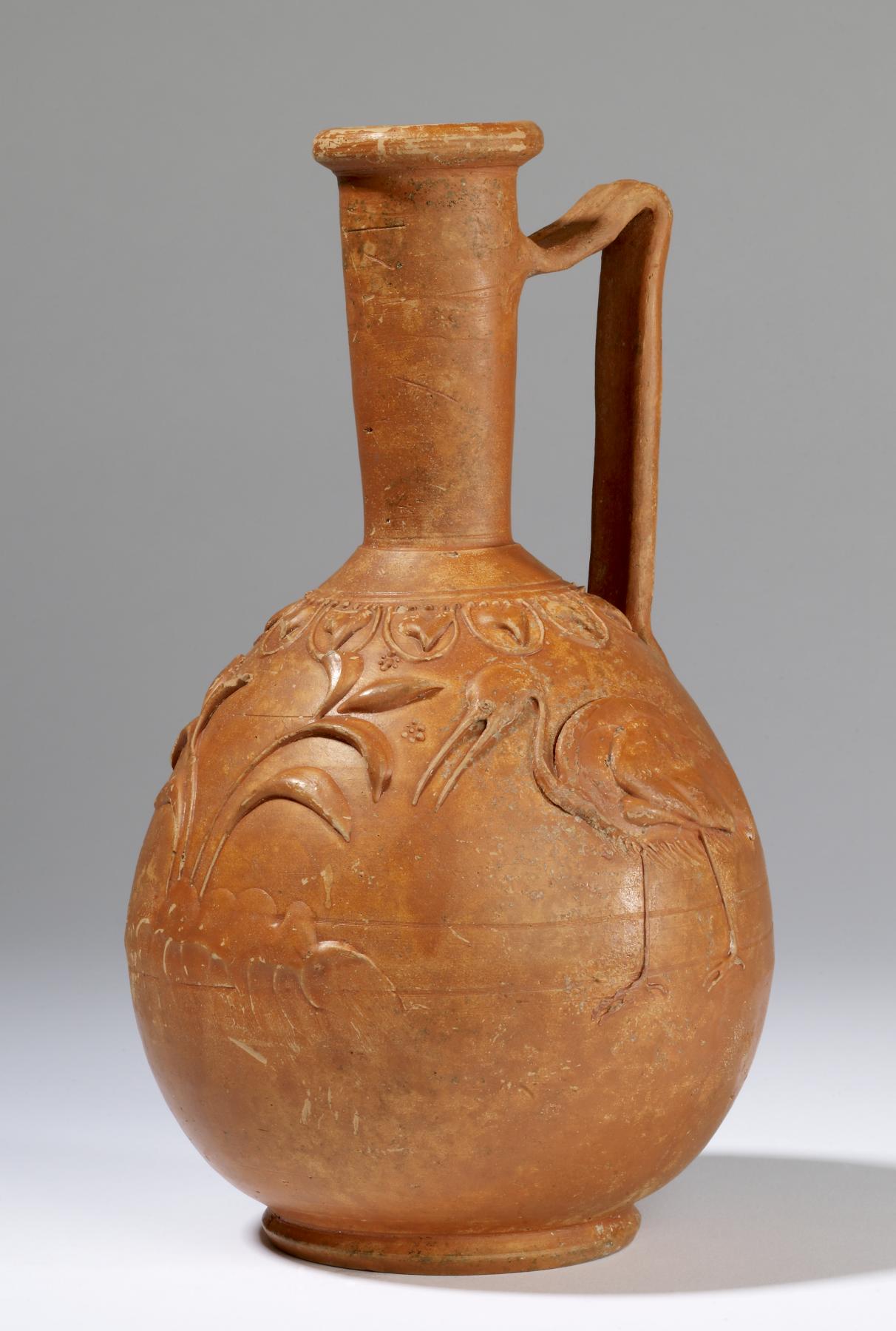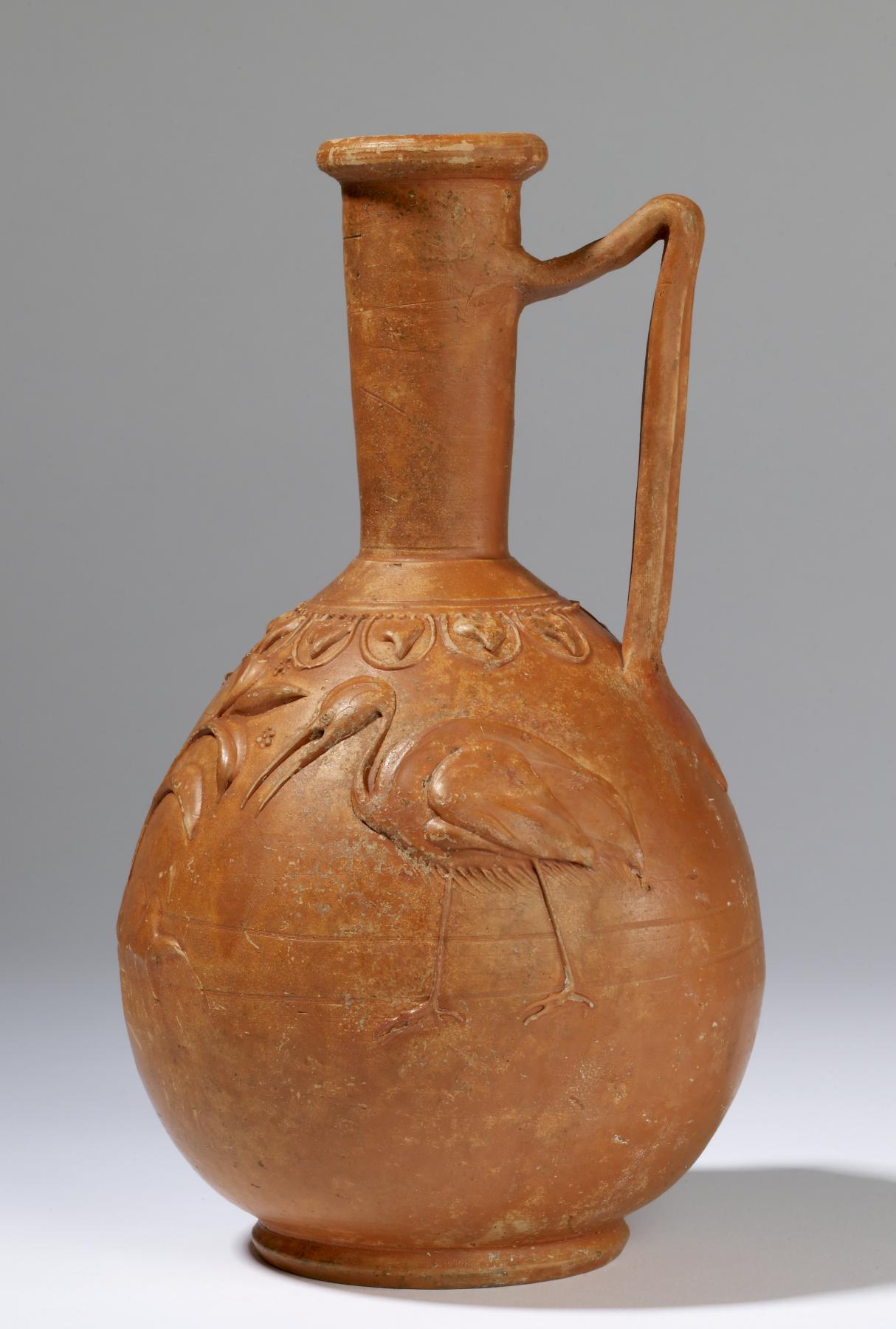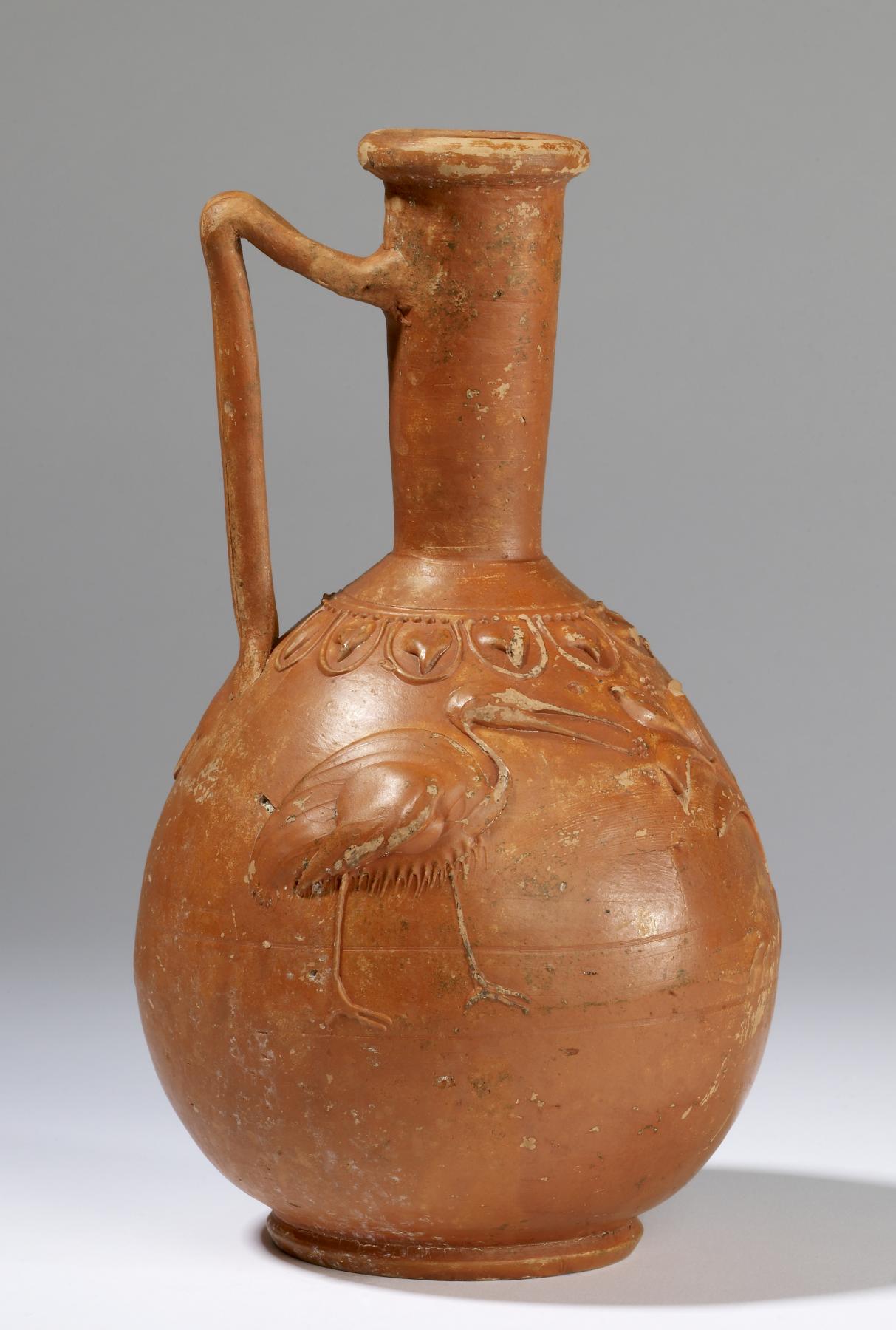Jug with Birds
(Roman Empire )
Two long-legged water birds, perhaps ibises, frame two large plants that rise from a stylized patch of earth; the leaves bend outwards toward the bird on either side. The birds are rendered with great skill, from the thin legs and slender, curving necks, to the indication of downy feathers on the bodies and incised pupils. One bird holds a rosette or cluster of berries in its beak. This idyllic scene is bordered above by a garland of ivy leaves and a row of dots that circle around the neck of the jug.
This jug is decorated in the "barbotine" technique, a style of decoration that is applied freehand using clay to create raised designs. The clay is either applied with a pointed instrument or piped on to a hard surface, creating a design in relief much like icing applied to a cake. This difficult technique was time-consuming and required great expertise, hence examples are rare. These vessels were typically made from yellow clay and glazed in a monochrome red.
Provenance
Provenance (from the French provenir, 'to come from/forth') is the chronology of the ownership, custody, or location of a historical object. Learn more about provenance at the Walters.
Dikran Kelekian, Paris and New York [date and mode of acquisition unknown]; Henry Walters, Baltimore, 1914, by purchase; Walters Art Museum, 1931, by bequest.
Geographies
Turkey (Samsun) (Place of Origin)
Measurements
H: 8 1/2 × Diam: 4 15/16 in. (21.6 × 12.5 cm)
Credit Line
Acquired by Henry Walters, 1914
Location in Museum
Accession Number
In libraries, galleries, museums, and archives, an accession number is a unique identifier assigned to each object in the collection.
In libraries, galleries, museums, and archives, an accession number is a unique identifier assigned to each object in the collection.
48.104














